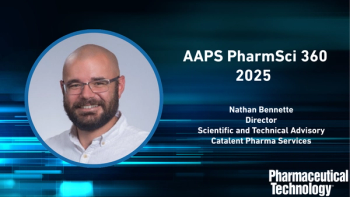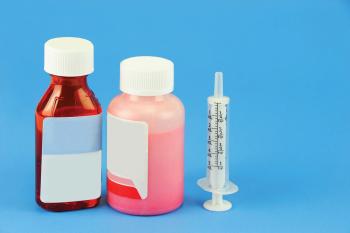
- Pharmaceutical Technology-06-02-2020
- Volume 44
- Issue 6
Reducing Risk with Abuse‑Deterrent Formulations
Increasing prevalence of drug misuse and abuse is driving a heightened and more stringent approach to abuse-deterrent formulations.
Possibly the most publicized and well-documented form of drug misuse and abuse has been that of opioids-prescription pain-relief medicines. The opioid crisis, which has impacted the global health community for several years, has paved the way for increased demand in abuse-deterrent formulations from pharmaceutical developers.
Abuse-deterrent formulations essentially have the potential to provide an effective way of reducing the capabilities of an end-user to abuse or misuse a medical therapy, while maintaining the drug’s clinical benefit. To explore the topic of abuse-deterrent formulations in more detail, Pharmaceutical Technology spoke with Angela Moore, scientist, Analytical Development, Alcami.
In need of risk mitigation approaches
PharmTech: Could you discuss some of the reasoning behind abuse-deterrent formulations and why there may be an increase in interest in this area?
Moore (Alcami): Doctors continue to prescribe opioid medications for pain management, generating an inevitable association with abuse and addiction. Government officials and pharmaceutical professionals alike are in need of risk mitigation approaches.
In the United States alone, there have been estimates, released by the US Department of Health and Human Services (HHS), revealing that in 2018 over 47,000 citizens died from an opioid overdose and that two million people in the country were suffering from an opioid use disorder (1). The economic costs associated with the opioid epidemic have been estimated at $504 billion, according to analysis by Johns Hopkins University Bloomberg School of Public Health (2). And, the issue of opioid addiction is not isolated to the US, with countries worldwide experiencing significant healthcare costs associated with prescription opioid abuse, such as those experienced in the five largest European countries as reported by Shei et al. (3).
Pharmaceutical companies have responded to this need through more stringent abuse-deterrent formulations and studies. Although abuse-deterrent does not equate to ‘abuse-proof,’ medications that contain abuse-deterrent properties make it more difficult for abusers to obtain the euphoria associated with common manipulation techniques.
Current approaches
PharmTech: Currently, what abuse-deterrent formulation approaches are available and what are the benefits and/or limitations to these approaches?
Moore (Alcami): The current products on the market that contain abuse-deterrent labeling approved by the Food and Drug Administration fall into two categories of abuse-deterrence: physiochemical and opioid/antagonist. Physiochemical abuse-deterrent properties include products that are formulated to resist crushing, chewing, and physical manipulation. They contain excipients that will ‘gel’ upon contact with solvents to make them difficult to inject intravenously. Opioid/antagonist products contain the active opioid intended for therapeutic use and also a sequestered antagonist so that if the product is manipulated intentionally it will release a chemical that will prevent the user from feeling the euphoric effects of the opioid.
There are benefits and challenges to both physiochemical and opioid/antagonist abuse-deterrent formulations. Benefits of physiochemical formulations include having physical barriers that make it more difficult to resist tampering and manipulation. Abusers avoid these formulations as they cannot easily crush and/or inject the drug. One of the biggest challenges of these types of formulations, however, is that there are still drug abusers who find ways to abuse these products. The excipients that are present in the formulations to prevent abuse can cause many health issues if injected. For example, OpanaER (Endo Pharmaceuticals) was an extended-release oxymorphone hydrochloride oral drug product. The drug was approved by FDA in 2006 but was being abused mainly by insufflation. The drug was reformulated in 2010 with physiochemical properties intended to be resistant to intranasal and intravenous routes. However, in June 2017, FDA requested OpanaER to be removed from the market as abusers had moved from insufflation abuse to injection abuse (4). The reformulated drug product was being shared between multiple users for injection. OpanaER was directly linked to outbreaks of Hepatitis C (New York, 2011), thrombotic thrombocytopenic Pupura-like (TTP) illness (Tennessee, 2012), and HIV (Indiana, 2015) (5,6).
A benefit to opioid/antagonist abuse-deterrent formulations is that the drug product contains a sequestered antagonist within the formulation. If the drug product is administered to patients as intended, it will work therapeutically. However, if a drug abuser tried to crush or manipulate the drug, the sequestered antagonist would be released and block the euphoric effects of the opioid. However, these abuse-deterrent products are not ‘abuse proof.’ Drug abusers have found ways to chemically extract the opioid from the antagonist with common household solvents to still abuse these formulations.
Another challenge that is related to all of the eight approved, abuse-deterrent opioid products that are on the market is cost. The products are all name-brand and expensive to patients. There are currently no FDA-approved generic equivalents to abuse-deterrent formulations, and insurance companies are reluctant to pay the extra expense for an abuse-deterrent opioid when the cost is vastly different from generic non-abuse-deterrent equivalents.
Close regulatory scrutiny
PharmTech: Are there specific regulatory challenges that should be considered when approaching abuse-deterrent formulations?
Moore (Alcami): FDA is closely scrutinizing all new abuse-deterrent products and current opioid products that are on the market now. There are comprehensive, in-depth testing requirements prior to approval of these products. For example, in-vitro testing of products intended to prevent abuse can take six months to a year to complete thousands of extraction, manipulation, and syringe studies.
After this testing is complete, the products are then verified in a clinical setting in humans, where clinical subjects purposely take a product as intended and then in an abused form and rate their ‘drug liking,’ which is if they enjoy the product recreationally and if they would take the drug again.
Post-approval, FDA also requires all pharmaceutical companies that manufacture prescription opioids commercially to participate in the REMS program (Risk Evaluation and Mitigation Strategy) where they monitor the abuse of commercially marketed opioid pharmaceuticals.
As each formulation and mode of abuse can be different, there is only FDA published guidance, Abuse Deterrent Labeling-Evaluation and Labeling Guidance for Industry, published in April 2015 that pharmaceutical companies can use as a guide for completing the required tests. Companies must work closely with FDA to ensure the testing performed is adequate and that study designs are acceptable. It is not uncommon for FDA to request additional testing at each stage of studies, which takes considerable time and expense to execute.
Evaluating effectiveness
PharmTech: How can the effectiveness of an abuse-deterrent formulation be evaluated?
Moore (Alcami): Current FDA guidelines for determining abuse-deterrence of a drug product involve four main studies termed Category 1, 2, 3, and 4.
Category 1 testing involves laboratory manipulation and extraction studies. In these studies, the product is evaluated and compared to currently marketed formulation(s) for the ability to defeat or compromise the abuse-deterrent properties. This testing is performed in-vitro and provides physical characteristics of the product and its ability to resist crushing, grinding, melting, and so on, to inhibit nasal abuse. Extraction studies provide information on the product’s ability to isolate the antagonist, or resist abuse by injection, or, in larger volumes, resist abuse by ingestion.
Category 2 testing involves pharmokinetic studies in healthy humans. The product’s in-vivo properties are evaluated by comparing an intact formulation against the manipulated formulation through one or more routes of administration. Comparator products are also evaluated for comparison.
Category 3 testing evaluates the clinical abuse potential of the product. These are large, complicated in-vivo studies that are generally conducted with recreational drug users as test subjects. These test subjects are screened prior to the study to ensure that they are able to distinguish between active drug and placebo in a drug abuse setting. In these studies, the test subjects are provided with the drug product being developed and suitable comparators. The drugs are administered through the route of abuse that is being studied (i.e., oral or intranasal) and the patients provide not only pharmokinetic data, but also subjective data on the drug liking (how high they are) and if they would take the drug again.
Category 4 assessment is a post-approval study that determines if the product has resulted in meaningful reductions in abuse, misuse, or adverse clinical outcomes (addiction, overdose, and death). These evaluations are conducted by the product manufacturer. Currently, there are no products on the market that contain the Category 4 label for abuse-deterrence.
Many considerations
PharmTech: What trends, potential new approaches, and considerations do you foresee as being important in the field of abuse-deterrent formulations in the near future and why?
Moore (Alcami): One of the biggest trends in abuse-deterrent formulations is the development of abuse-deterrent generic products. FDA has published guidance for industry, General Principles for Evaluating the Abuse Deterrence of Generic Solid Oral Opioid Drug Products, for companies that are developing generic products comparable to the approved abuse-deterrent products on the market (7). The intention of the guidance is to reduce the amount of testing required for the generic product by showing equivalence or superiority to the name-brand product in laboratory-based, abuse-deterrent tests so that human trials (Categories 2 and 3) are not required. Additionally, any new opioid drug that is being developed must demonstrate resistance to abuse in order to grant FDA approval.
There are many considerations for manufacturers developing abuse-deterrent opioid formulations. Most importantly, the product must be considered safe and effective, and it must adhere to all regulatory manufacturing and testing guidelines. From a chemistry and biologic perspective, the product must resist dose dumping and abuse, but still release the active ingredient when ingested as intended. From the commercialization perspective, key considerations are developing a product that has a competitive advantage over what is on the market today. The company must differentiate their product so that they can answer the question: ‘What product characteristics will make a doctor want to prescribe the new product over what is on the market?’ Furthermore, insurance companies, governments, and patients must be convinced that the new product is worth more compared to cheaper, non-abuse-deterrent products on the market.
References
1. HHS, “What is the US Opioid Epidemic?” hhs.gov, Epidemic Informatic last updated Sept. 4, 2019 [accessed May 12, 2020].
2. D.H. Lin, et al., JAMA Netw. Open, 1 (2) e180235 (2018).
3. A. Shei, et al., Clinicoecon. Outcomes Res., 7 477–488 (2015).
4. FDA, “
5. H. Mehmood, et al., J. Investig. Med. High Impact Case Rep., Published Online Jan. 31, 2018.
6. Endo Pharmaceuticals, “Opana ER-Oxymorphone Hydrochloride Tablet, Extended Release,” endo.com, Prescribing Information [accessed May 12, 2020].
7. FDA,
Useful link
Article Details
Pharmaceutical Technology
Vol. 44, No. 6
June 2020
Pages: 24–27
Citation
When referring to this article, please cite it as F. Thomas, “Reducing Risk with Abuse-Deterrent Formulations,” Pharmaceutical Technology 44 (6) 2020.
Articles in this issue
over 5 years ago
What’s Next in Air Transportation for Clinical Trial Logisticsover 5 years ago
2019 Investments Centered around Cell and Gene Therapiesover 5 years ago
Generic Drugs in Spotlight as Pandemic Creates Shortagesover 5 years ago
Are We All In This Together?over 5 years ago
Following Guidelines During a Crisisover 5 years ago
Intelligent Packaging Promotes Interaction with Patientsover 5 years ago
Why Do Disinfectant Residues Matter?over 5 years ago
Formulating for Convenience and Complianceover 5 years ago
Better Connected: The Value of Connected Drug Deliveryover 5 years ago
A Strategic Shake Up in Europe’s Medicines SectorNewsletter
Get the essential updates shaping the future of pharma manufacturing and compliance—subscribe today to Pharmaceutical Technology and never miss a breakthrough.




